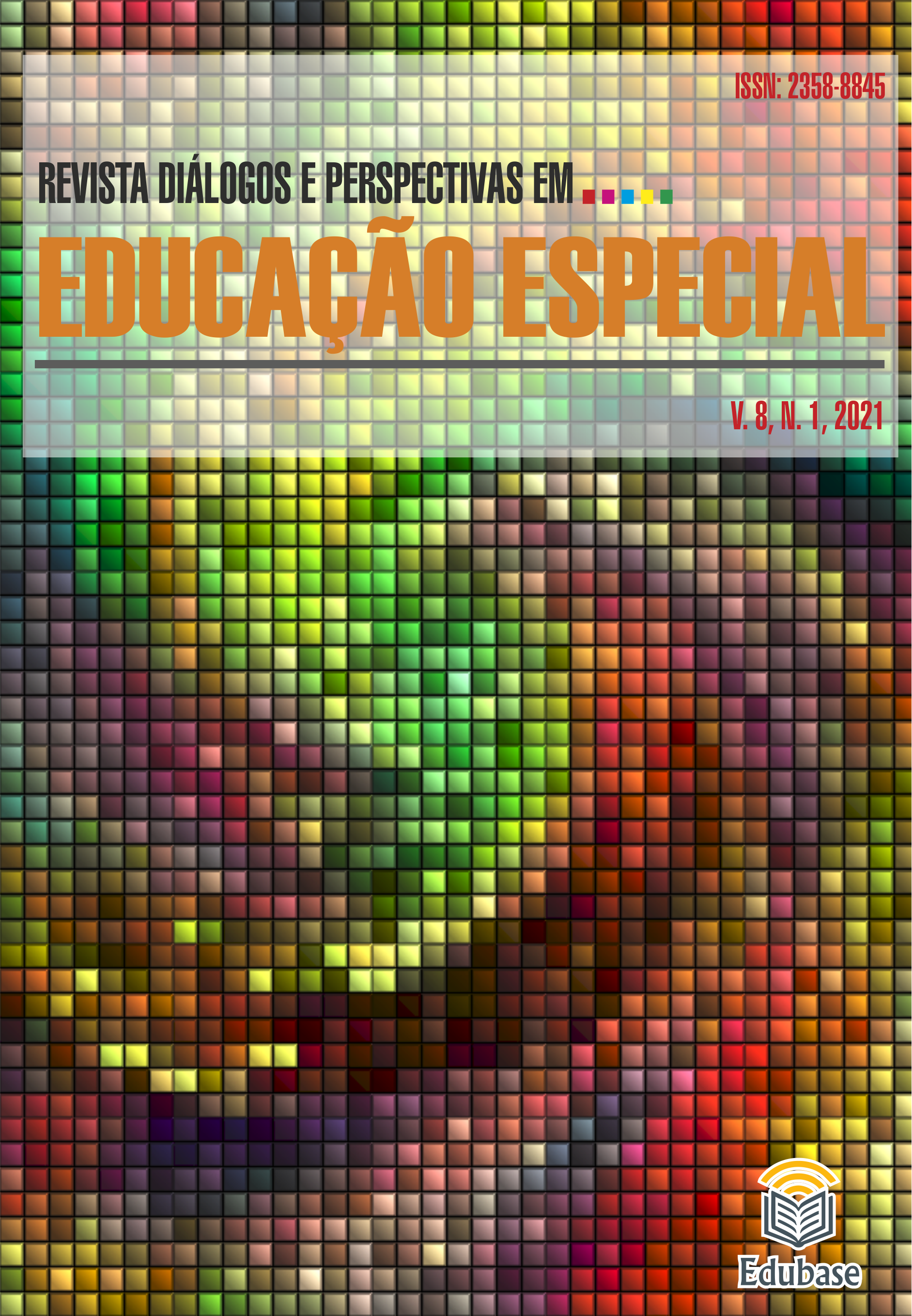Myths about deafness in the imaginary of young and adult students of an inclusive bilingual school
DOI:
https://doi.org/10.36311/2358-8845.2021.v8n1.p143-154Keywords:
Deaf Education, Brazilian Sign Language, DeafnessAbstract
Nowadays discussions involving deafness and the deaf people are becoming more frequent in our society, but even with a greater approach to that subject and the presence of deaf people in inclusive environments, the general population still have a lack of knowledge about the issues involving the deafness. That helps to create an erroneous sense-common and stereotypes involving the deafness, deaf person and their specificities. In this context, this article aims to report and discuss some myths about deafness through an activity carried out in a municipal school in Campinas. The activity had as a proposal to investigate the knowledge of hearing students about deafness and the deaf person to discuss and deconstruct the main myths surrounding this theme. Also, is proposed an discussion about the role of inclusion at the modification of the view that the hearing people have of the deaf people and about deafness itself. The results obtained indicate that just inserting deaf students in the classroom does not promote a change in the view of hearing students about the experience of being deaf or about the brazilian sign language. To obtain that result would be necessary that the management of the schools mobilizes itself with the aim of providing situations in which the deaf assume a leading position in the classroom and at school to share true knowledges about the differences and the potentialities of deaf people and about the brazilian sign language, in order to overlap the myths widespread and often assumed as true.
Downloads
References
ALMEIDA, K. Seleção e adaptação de próteses auditivas em adultos. In: FERREIRA, L. P.; BEFI-LOPES, D. M.; LIMONGI, S. C. O. Tratado de Fonoaudiologia, São Paulo: Roca, 2004.
BRASIL. Decreto nº 5.626, de 22 de Dezembro de 2005. Regulamenta a Lei nº10.436 de 24 de abril de 2002. Diário Oficial da República Federativa do Brasil, Brasília, DF, 23 dez. 2005. Disponível em: http://www.planalto.gov.br/ccivil_03/_Ato2004-2006/2005/Decreto/D5626.htm . Acesso em: 20 jul. 2019.
BRASIL. Lei nº 10.436, de 24 de abril de 2002. Dispõe sobre a Língua Brasileira de Sinais - LIBRAS e dá outras providências. Diário Oficial da República Federativa do Brasil, Brasília, DF, 24 abr. 2002. Disponível em: http://www.planalto.gov.br/ccivil_03/leis/2002/l10436.htm . Acesso em: 20 jul. 2019.
BRASIL. LEI Nº 13.146, de 6 de julho de 2015. Institui a Lei Brasileira de Inclusão da Pessoa com Deficiência (Estatuto da Pessoa com Deficiência). Diário Oficial da República Federativa do Brasil, Brasília, DF, 6 de julho de 2015. Disponível em http://www.planalto.gov.br/CCIVIL_03/_Ato2015-2018/2015/Lei/L13146.htm . Acesso em: 20 jul. 2019.
CLETO, M. L. S. Reabilitação na Laringectomia total. Fonoaudiologia em cancerologia, p. 83, 2000.
DINIZ, D. M; SILVA, J. P. Desafios da inclusão na trajetória escolar da pessoa surda. Encontro Internacional de Formação de Professores e Fórum Permanente de Inovação Educacional, v. 10, n. 1, 2017. Disponível em https://eventos.set.edu.br/enfope/article/view/5299/1791 . Acesso em: 07 set. 2020.
GESSER, A. Libras? Que língua é essa?: Crenças e preconceitos em torno da língua de sinais e da realidade surda. São Paulo: Parábola Editorial, 2009.
GIL, A. C. Técnicas de pesquisa em economia e elaboração de monografias. São Paulo: Atlas, 2000.
LACERDA, C. B. F.; SANTOS, L. F.; MARTINS, V. R. O. (Orgs.). Escola e diferença: caminhos da educação bilíngue para surdos. São Carlos: Edufscar, 2016.
PEIXOTO, A. C. A.; CAROLI, A. L. G.; MARIANA, S. R. Mutismo seletivo: estudo de caso com tratamento interdisciplinar. Rev. bras. ter. cogn. Rio de Janeiro , v. 13, n. 1, p. 5-11, jun. 2017. Disponível em http://pepsic.bvsalud.org/scielo.php?script= sci_arttext & pid=S1808-56872017000100003 & lng= pt nrm=iso . Acesso em: 20 jul. de 2019.
PEREIRA, M. C. C. et al.. Libras: conhecimento além dos sinais. São Paulo, 2011.
QUADROS, R. M.; KARNOPP, L. B. Língua de Sinais Brasileira: estudos linguísticos. Porto Alegre: Artmed, 2004.
ROCHA, E. O que é Mito: Notas de estudo de Cultura. Rio de Janeiro: Brasiliense, 1994.
SOBREIRA, A. C. O. et al. Desenvolvimento de fala e linguagem na deficiência auditiva: relato de dois casos. Revista CEFAC, v. 17, n. 1, p. 308-317, 2015.
SOFIATO, C. G. A política de inclusão de alunos surdos na rede municipal de ensino na cidade de Campinas: o Programa de Inclusão Bilíngue. Anais do I Simpósio Internacional de Estudos sobre a Deficiência – SEDPcD/Diversitas/USP Legal – São Paulo, junho/2013. Disponível em http://www.memorialdainclusao.org.br/ebook/Textos/Cassia_Geciauskas_Sofiato.pdf . Acesso em: 07 set. 2020.
Downloads
Published
Issue
Section
License
Copyright (c) 2021 REVISTA DIÁLOGOS E PERSPECTIVAS EM EDUCAÇÃO ESPECIAL

This work is licensed under a Creative Commons Attribution 4.0 International License.
- The works published in RDPEE are the sole responsibility of their authors. The authors grant the journal the right of first publication, with the work simultaneously licensed under the Attribution-CC BY, which allows distribution, remixing, adaptation and creation from the work with recognition of the authorship and initial publication in this journal.
- The authors consent that their articles may be incorporated by RDPEE into indexers and databases that currently exist or may exist in the future; the owners of these databases may reproduce, transmit and distribute the texts, in whole or in part, in any form or means of electronic transmission that exists or may be developed in the future.
Qualis Capes (2017-2020)
Education: B1




